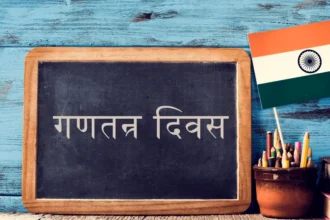Afghanistan has experienced widespread disintegration after a nationwide internet blackout imposed by the Taliban government. With no official explanation, the shutdown has resulted in millions of disconnects and essential services across the country.
Kabul’s main airport ground for a stop, as the communication system failed, was forced to cancel and flights created confusion for passengers. Residents described the airport as “almost deserted”, which is listed as either canceled or “unknown” with both the upcoming and outgoing flights.
This blackout has also disrupted access to banking services, e-commerce operations, and distance education-especially affecting women and girls who rely on online platforms due to existing education sanctions.
What Caused the Internet Shutdown?
Although the Taliban has yet to release a formal justification, the blackout appears to be part of broader efforts to enforce new “morality” measures. Reports suggest the cuts began in several provinces before expanding to the capital, Kabul, by Monday evening.
A provincial spokesperson previously stated that the move aimed to curb “evils” associated with digital access, although no concrete examples were cited. Some regions reported a stepwise disconnection of fibre-optic networks, leaving citizens suddenly offline.
The timing coincides with recent crackdowns on women’s rights and academic freedoms, raising concerns that digital suppression is being used to isolate communities further. Here is the link to our article on Flight Strike Disruption.
How Are Daily Services Impacted?
The Afghanistan internet blackout has brought normal life to a standstill. In Kabul, shopkeepers say deliveries have stopped, markets are empty, and mobile-based transactions are frozen. A shop owner shared, “It’s like a public holiday. Everyone’s home and the economy are frozen.”
Banks across the capital are facing long queues as residents scramble to withdraw cash. However, availability is extremely limited. In southern provinces like Helmand, all banks have reportedly closed, halting both local and international financial operations.
Meanwhile, essential communication tools — from mobile internet to satellite TV — have been heavily affected. News agencies and journalists report severe disruptions in broadcasting and coordination. Camera crews now travel in person to reach interviewees, slowing the flow of information.
Who Is Most Affected by the Blackout?
Women and girls, already excluded from in-person education beyond the age of 12, are among the hardest hit. Online classes had become a vital lifeline — a last remaining path to learning, earning, and personal freedom.
One university student who was enrolled in a midwifery program said her future now feels uncertain. “When I heard the internet was cut, the world felt dark to me,” she said. Another parent noted that their daughter’s English courses had been canceled due to the blackout, eliminating their last connection to global education.
Media channels like Tolo News have advised audiences to follow updates via social platforms — although even those are no longer accessible for many due to the blackout. Here is the link to our article on Flight Resumption Delayed.
What Has the International Response Been?
The United Nations has strongly criticized the internet shutdown, warning that it could worsen Afghanistan’s already dire humanitarian crisis. In a public statement, the UN urged the Taliban to restore full access to the internet and telecommunications immediately.
The organization highlighted the economic and humanitarian risks, noting that the blackout effectively isolates Afghanistan from the rest of the world at a critical time. International observers have echoed concerns, calling the move both oppressive and destabilizing.
Diplomats have also raised alarms, warning that banking infrastructure, international aid delivery, and emergency communication systems could collapse if the blackout continues.
Final Thoughts
The Afghanistan Internet Blackout is a significant turn in the country’s digital and human scenario. By separating the Internet access, the Taliban risked deepening isolation, preventing economic progress, and removing one of the final equipment available for its weakest citizens. As the world sees, pressure continues to restore services and protect fundamental rights.








